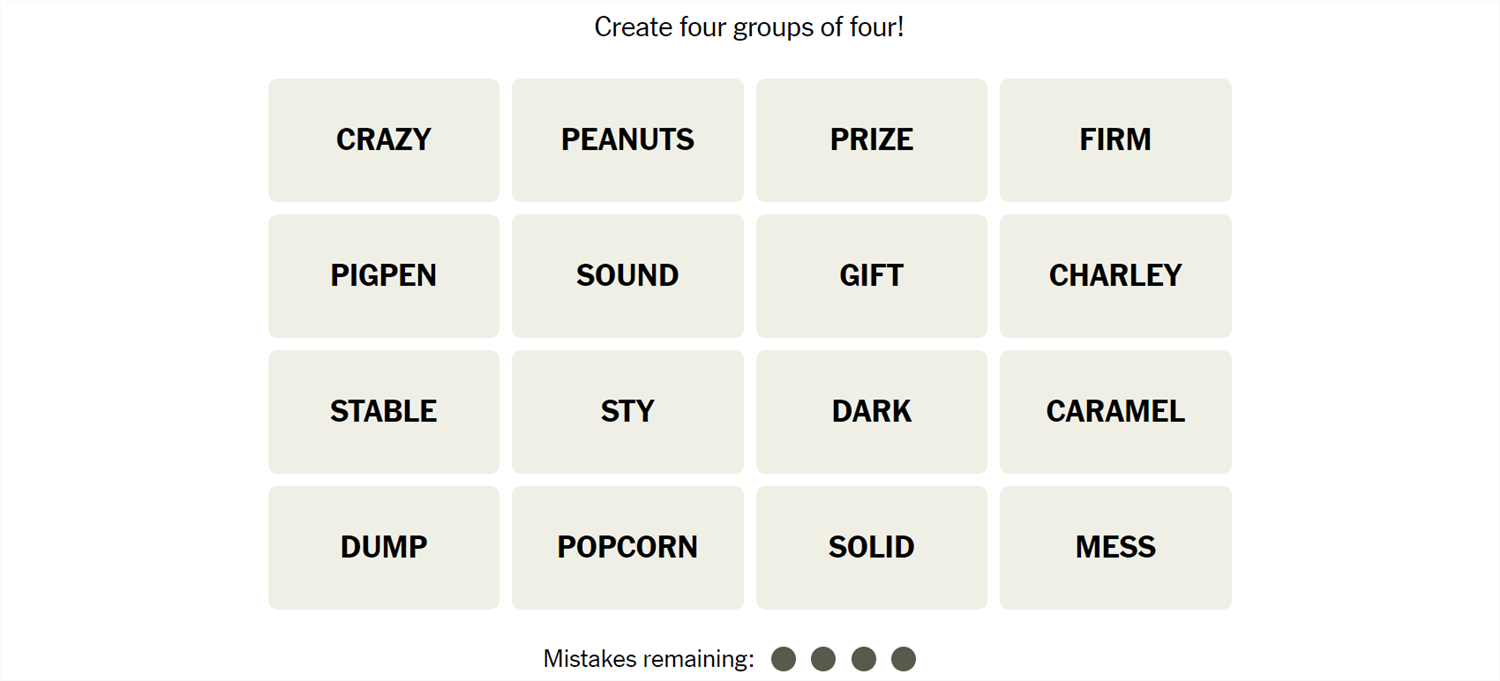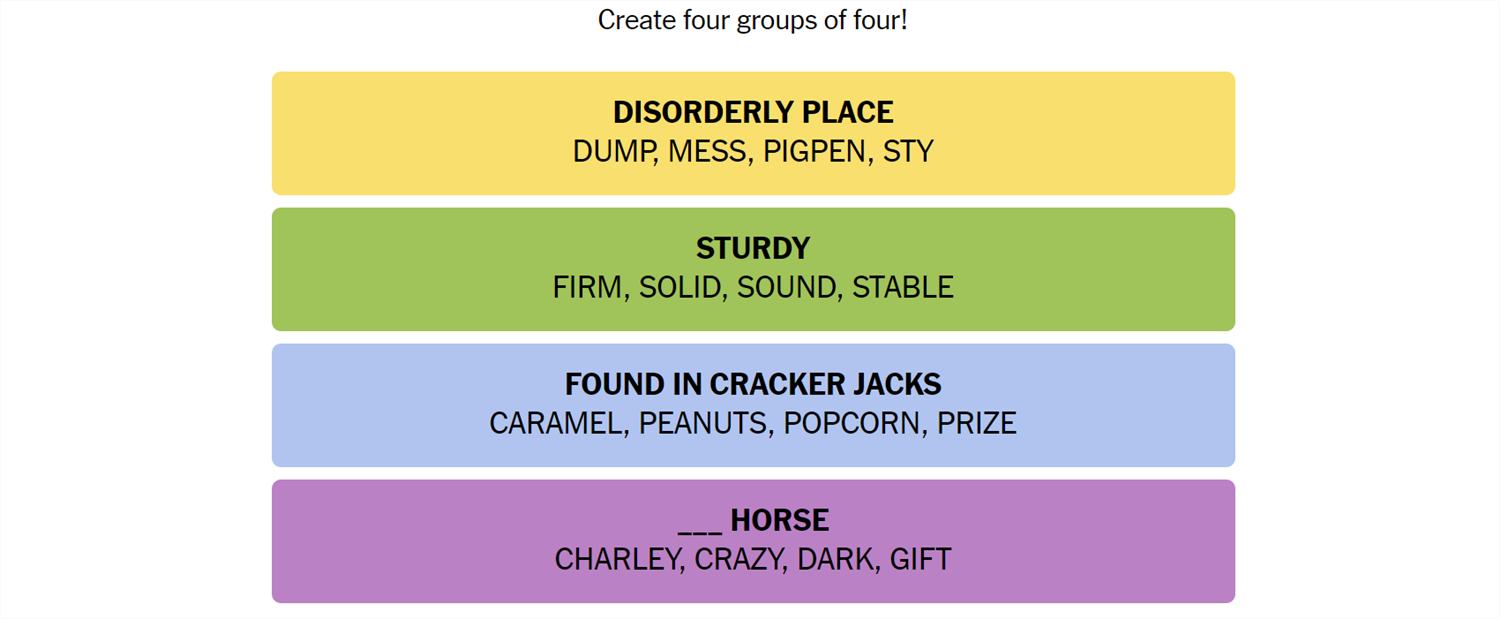Connections is a game from the New York Times that challenges you to find the association between words. It sounds easy, but it isn’t—Connections categories can be almost anything, and they’re usually quite specific. If you need a hand getting the answers, we’ve got you covered.
What Is Connections?
Connections is a game from the New York Times. The objective is simple: sort 16 words into groups of 4. Each group of words will be connected by some common idea or theme. That common element could be anything. We have seen everything from games that rely on the number of letters in the words to categories that require you to spot an extra letter at the end of the word. Sometimes they’re references to economics, other times they reference fairy tales. There is no telling what sort of association there will be between words.
Once you’re confident you understand the connection, select 4 words, then hit “Submit.” You have only four attempts in total, so don’t be too guess-happy.
Hints for Today’s Connections Categories
Here are a few small hints for the 301st Connections game to get you started:
- Yellow: Chaotic or dirty.
- Green: Reliable.
- Blue: Related to a snack.
- Purple: A type of farm animal follows these words.
What Are Today’s Connections Categories?
If you still need help, the actual categories are:
- Yellow: Disorderly Place
- Green: Sturdy
- Blue: Found in Cracker Jacks
- Purple: ___ Horse
Today’s NYT Connections Answers
Disorderly Place (Yellow):
Dump, Mess, Pigpen, Sty
Sturdy (Green):
Firm, Solid, Sound, Stable
Found in Cracker Jacks (Blue):
Caramel, Peanuts, Popcorn, Prize
___ Horse (Purple):
Charley, Crazy, Dark, Gift
How Did We Solve This Connections Game?
April 7th was a pretty average game.
Firm, solid, and stable all clicked immediately, and sound didn’t take too long to pick out, finishing out the Green Category (Sturdy.)
Dump and mess were obviously paired, and pigpen and sty are often used interchangeably, and that also seemed like a pretty natural guess. The connection between the Yellow words was “Disorderly place.”
The remaining 8 were a bit less clear.
After a bit of shuffling, the “___ horse” connection between crazy, dark, and gift became apparent, but charley and prize gave us a short pause. You’ll often see prize used in the context of horses when referring to a prize stallion, but a charley horse is also a term. We opted for charley since the phrase is directly tied to the word horse. That finished out Purple.
The last category had us a little lost for longer than we’d like to admit. Caramel, peanuts, and popcorn are all edible things, snack foods in particular. But prizes? Most prizes aren’t supposed to be eaten. With no clear connection, we picked the last 4 and revealed “Found in Cracker Jacks” as the Blue category. It makes sense, but unless you’ve actually opened and eaten a box of Cracker Jacks, it might be tough.
How Do You Guess Connections Categories?
There is no quick, reliable way to approach Connections like there is with Wordle, since Connections isn’t algorithmic. However, there are a few things to keep in mind that can help.
- Look for similar parts of speech. Are some words verbs and others nouns? Are some adjectives? Try mentally grouping them based on those categories and see if any other patterns jump out at you.
- Are the words synonyms? Sometimes categories will just be synonyms for a phrase, or very close to synonyms. Don’t rely too closely on this, though. Occasionally, Connections will deliberately throw in words that are sometimes synonyms to mislead you.
- Try saying the words. Sometimes, saying the words helps. One puzzle we saw included the words go, rate, faster, clip, pace, speed, move, commute, and hurry—all of which are obviously related to the idea of motion. However, when you say them, it becomes a little more obvious that only four (go, move, hurry, faster) are things you’d actually say to prompt someone to get moving.
- Expect the red herring. Connections usually has words that could be plausibly, yet incorrectly, grouped together. Take the words Bud, Corona, and Light, as an example. You might instinctively see those three words together and assume they’re lumped together in a category related to beer—but they weren’t.
- Look for distinct words. If a word on your board doesn’t have multiple meanings or can really only be used in one context, try using that word as the basis for a category.
- Shuffle the board. Sometimes, moving words around will help you look at them in new ways.
If you didn’t solve this one, don’t feel too bad—there’s always tomorrow! And those words may align with a topic you’re interested in, giving you a leg up on the competition.



